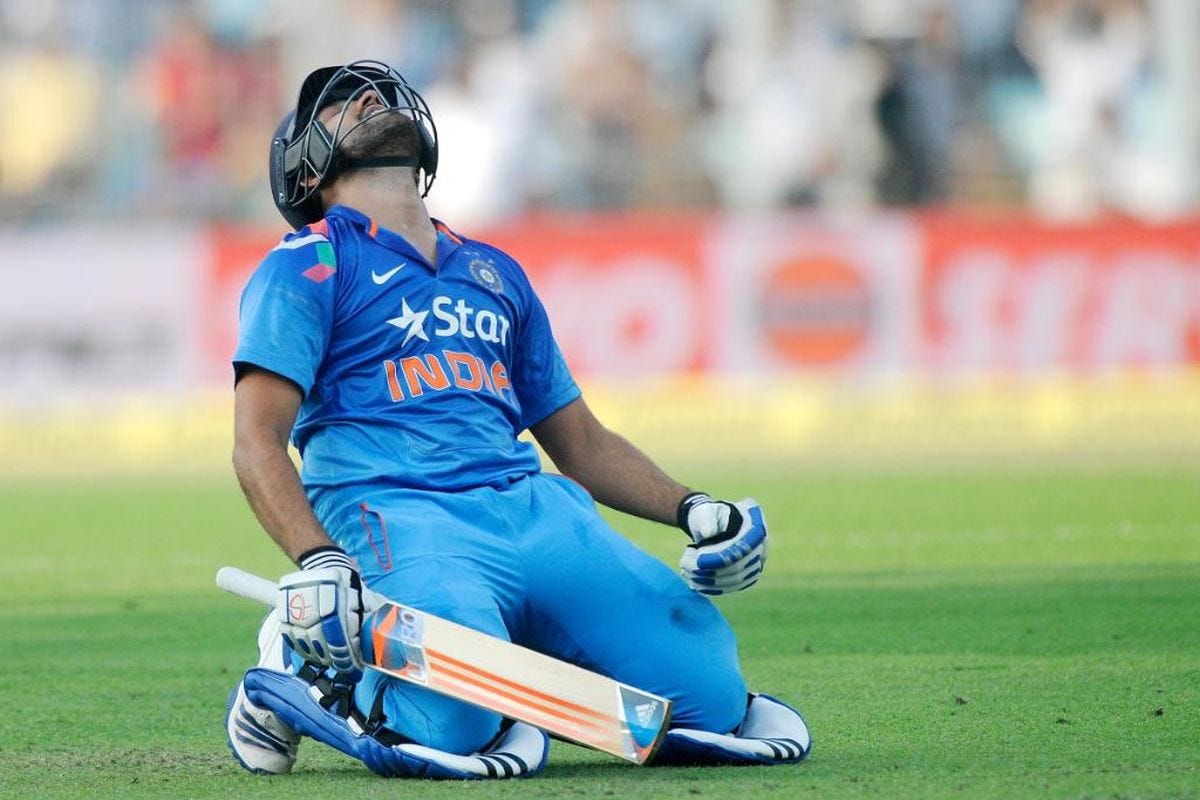Ibrahim Zadran placed himself 41st on the list of highest individual scorers in ODI cricket by compiling 177 runs from 146 balls, so helping Afghanistan to an eight-run victory over England. Additionally, Zadran became his country’s first batter to score a Champions Trophy hundred, after he was the first to reach three figures in World Cup competition—that came against Australia in 2023.
First, we shouldn’t be surprised that a batter from Afghanistan is able to achieve such heights. Zadran is a fast-emerging talent who, without uniform or name, might easily present as an Indian player with a significant future. His fundamentals are excellent, and more importantly, he knows when and how to deploy them. Second, it’s easy in the current climate to discount numbers that used to represent a team score as trivial. These are indeed ‘Daddy Hundreds’ as Graham Gooch preferred to call them. And to think there are 40 scores of equal to or more is just nuts.
It may be wise to look at where it all began. Seriously, the progression of output from unassuming beginnings is remarkable. But, where did it start?
John Edrich (1937-2020) was one of English cricket's most accomplished batsmen. His durable career spanned nearly two decades. After debuting for Surrey in 1958, he went on to play 77 Test matches for England. However, his most notable contribution to limited-overs cricket was scoring the first ODI half-century in the inaugural ODI against Australia at the Melbourne Cricket Ground in 1971. Edrich initiated the list with a patient 82 (no ball count available)—four boundaries, and absolutely no sixes. Eighteen months later, teammate Dennis Amiss would be the first to record a century, displacing Edrich with a carefully crafted 103 (nine boundaries)—Old Trafford was the venue and Australia again the opposition.
I must mention David 'Bumble' Lloyd, who temporarily held the mantle of top dog between Amiss and the subsequent explosion of ODI batting. Bumble carried his bat for 116* against Pakistan at Trent Bridge (nine fours, and wait for it, a solitary six. I would bet Bumble's retirement money this was a spin-related maximum.) I say that with confidence, being a constant close spectator to his son, Graham, who plundered spin like it was going out of style. I recall Graham making his ODI debut at Trent Bridge and being unable to get past the car park attendant. The over-officious yellow coat refused entry to the debutant on the premise that an England cricketer shouldn't be driving a Ford Capri! Geoff didn't care for sponsored cars.
The ICC Men's Cricket World Cup, cricket's premier international competition, has grown from its humble 1975 debut in England into one of the sport's most-watched events. However, it was here that we started to see higher individual scores appear. The 60-over an innings window allowed more scope for batters from the middle order to flourish and the more conservative top order to establish and thrive longer.
New Zealand's unorthodox but hugely effective opener, Glenn Turner, was next to supplant himself at the top of the ladder, making 171 not out against East Africa at Edgbaston—he was familiar with the West Midlands, making countless hundreds for near neighbours, Worcestershire.
Eleven days hence, India's Kapil Dev blasted 175 not out against Zimbabwe at Tunbridge Wells, extricating his side from all sorts of trouble. Being nine at the time and confined to a summer of rest after a kidney operation, I remember fondly Kapil wielding his Slazenger (shorn shoulders—can't remember the name) to maximum effect. Of course, I wished I had one!
Kapil registered 16 boundaries and six maximums, and there it was, the pivotal shift from batters respecting boundary fielders to simply clearing them with little thought of not. One of the highlights of my career was playing in a Lancashire v Rest of the World game at Old Trafford in the late eighties. Kapil swung the ball around like a magician; now you see it, now you don’t—a fantastic cricketer.
The next incumbent needs no introduction. In May of 1984, Vivian Richards dismantled England for 189 not out at Old Trafford. Again, his side was in all sorts of early trouble. David Shepherd, the umpire, raised a white handkerchief such was the ferocity of Richards’ stroke play. That day was the birth of the Duncan Fearnley Magnum—all chambers loaded.
Naturally, the ‘little master’ Sachin Tendulkar bridged the next gap. Tendulkar had previously made 175 and 186 not out, but no double hundred. He wasn’t to be denied, a neat 200 not out against South Africa in the 2010 World Cup ticked perhaps the final multiple hundred box—or will someone get to 300? I remember thinking how many double hundreds we might see at the time. That number currently stands at eleven, and India’s Rohit Sharma has three! (264, 209, and 208*)
Of the eleven, Glenn Maxwell's 201 not out against Afghanistan in the 2023 World Cup might be the most extraordinary. The headline I recall was Glenn Maxwell's Heroic Double Century: A Cricket Miracle. Indeed, it is a cricket miracle.
Battling cramps, a moving ball and mounting pressure, Maxwell guided Australia to an improbable victory after they had collapsed to 7-91 chasing 292, which elevated Australia into the semi-finals against South Africa and cemented Maxwell's place in World Cup folklore, as Australia went on to win the 2023 World Cup. Maxwell recorded 21 boundaries and ten sixes—that’s close to 75% in boundaries!
So, where to go next? Of the twelve double-ton brigade, there are seven batters from India—Sharma has three, Virender Sehwag, Ishan Kishan, Shubman Gill, and Tendulkar. West Indian, Chris Gayle. New Zealand’s Martin Guptill. Pathum Nissanka from Sri Lanka and Maxwell round out the crew. South Africa’s highest entry is Gary Kirsten (188*). Pakistan has two batters in the 190s: Saeed Anwar and Fakhar Zaman. And England’s top guy is Ben Stokes (182) at 26th.
How times and methods change.
Zadran’s ‘Daddy Hundred’ helped his team to a squeaky eight-run victory over a disappointing England. Joe Root (120 from 111 balls) fought valiantly; again, though, there was a lack of substantial help, with the next highest score being 38. England are now without a win in their last six games, and Afghanistan have a realistic chance of making the last four.







